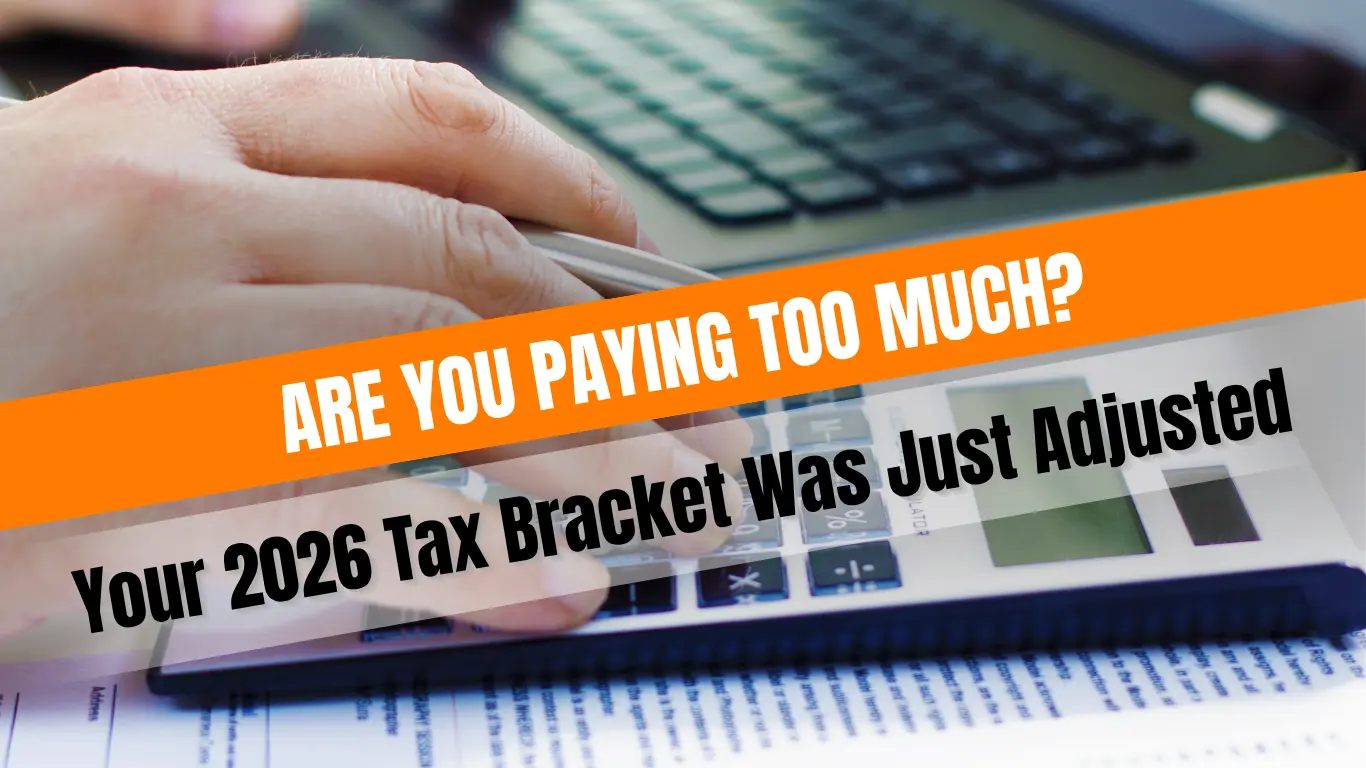
The IRS recently released its annual inflation adjustments for 2026. Adjustments have been made to over 60 provisions. While these changes are something that happens annually, they can have a real impact on your paycheck, your deductions, and your financial planning. Hence, you need to stay informed on these changes and the likely impact on your finances.
Let's look at the major changes for 2026.
What Changed in 2026?
The adjustment to the federal income tax brackets to account for inflation is an annual ritual conducted by the IRS. However, for 2026, these changes reflect standard inflation indexing as well as updates from the One Big Beautiful Bill Act (OBBBA), which introduced new thresholds and deduction amounts.
These are the changes you can expect:
Higher Standard Deduction (2025 & 2026)
For 2026, the standard deduction rises to $32,200 for married couples filing jointly and $16,100 for single filers. Household heads can claim a standard deduction of $24,150 for 2026.
Apart from these changes for 2026, the IRS has also announced the changes in the standard deduction for the tax year 2025 due to the OBBBA. Married couples filing jointly can claim a standard deduction of $31,500 in 2025, which is up from the amount of $30,000 prior to the OBBBA. For single taxpayers or married taxpayers filing separately, the standard deduction increases to $15,750, which is an increase of $750 from the amount of $15,000 prior to the OBBBA. This year, heads of households can claim up to $23,625 as a standard deduction after the OBBBA, while before that, the amount stood at $22,500 for 2025.
Bracket Shifts
The income ranges for each tax rate have been pushed upward with the new IRS updates. This means more of your income may be taxed at lower rates, which is great if your income hasn't jumped dramatically.
The income brackets for 2026 are as follows:
Below $12,400 for singles and $24,800 for married couples filing jointly - 10%
- Below $12,400 for singles and $24,800 for married couples filing jointly - 10%
- Incomes over $12,400 for singles and $24,800 for married couples filing jointly - 12%
- Incomes over $50,400 for singles and $100,800 for married couples filing jointly - 22%
- Incomes over $105,700 for singles and $211,400 for married couples filing jointly - 24%
- Incomes over $201,775 for singles and $403,550 for married couples filing jointly - 32%
- Incomes over $256,225 for singles and $512,450 for married couples filing jointly - 35%
- Incomes over $640,600 for singles and $768,700 for married couples filing jointly - 37%
U.S. Federal Income Tax Brackets Comparison: 2026 vs. 2025
| Tax Rate | 2026 Income Threshold (Single) | 2026 Income Threshold (Married Filing Jointly) | 2025 Income Threshold (Single) | 2025 Income Threshold (Married Filing Jointly) |
|---|---|---|---|---|
| 10% | Below $12,400 | Below $24,800 | Below $11,925 | Below $23,850 |
| 12% | Over $12,400 | Over $24,800 | Over $11,925 | Over $23,850 |
| 22% | Over $50,400 | Over $100,800 | Over $48,475 | Over $96,950 |
| 24% | Over $105,700 | Over $211,400 | Over $103,350 | Over $206,7000 |
| 32% | Over $201,775 | Over $403,550 | Over $197,300 | Over $394,600 |
| 35% | Over $256,225 | Over $512,450 | Over $250,525 | Over $501,050 |
| 37% | Over $640,600 | Over $768,700 | Over $626,350 | Over $751,600 |
Some Other Changes Due to Indexing
1. Alternative Minimum Tax Exemption Amount
The Alternative minimum tax is a parallel tax system designed to ensure high-income earners pay a minimum level of tax, even if they claim many deductions under the regular tax system. After indexing, the exemption amount for alternative minimum tax stands at $90,100 for unmarried individuals, and phase out begins at $500,000. For married couples filing jointly, the exemption is $140,200, and it will begin phasing out once the $1,000,000 level is breached.
2. Estate Tax Credits
An amount of $15,000,000 will be excluded from the estate of individuals who die in 2026. For 2025, this amount was $13,990,000.
3. Adoption Credits
The adoption credits are benefits extended by the IRS to families who come forward to adopt children to help them cope with the costs involved in adopting a child. For 2026, the maximum credit is $17,670.
4. Employer-Provided Childcare Tax Credit
This federal incentive for businesses to support their employee's childcare needs has been increased significantly to $500,000 ($600,000 if the employer is an eligible small business) from the previous $150,000.
Why These Updates Matter
The smallest of IRS adjustments can impact your income and tax liability,
- Your take-home pay: If more of your income falls into a lower bracket, you'll owe less in taxes. But if you're not aware, you could continue to pay at higher rates
- Your tax refund: Withhold too much, and you could claim a bigger refund. Withhold too little, and you could owe taxes.
- Your financial strategy: Planning for retirement contributions, charitable giving, or business expenses? Knowing your bracket helps you optimize deductions and credits.
Knowing about the 2026 tax bracket adjustments will ensure you don't over-withhold taxes or miss out on deductions. If your income changed, your filing status shifted, or you've tapped into a part-time income stream, your tax situation might be very different from last year. And with the 2026 adjustments, it's worth revisiting your strategy, especially if you want to avoid surprises come April.
Get Expert Help with Finlotax
Ready to take control of your tax strategy? At FinloTax, we help individuals and small businesses navigate tax brackets, deductions, and compliance with confidence. Whether you're adjusting your W-4, planning for next year, or just want peace of mind, we offer personalized guidance backed by real expertise.
Don't guess, rather optimize. Visit FinloTax office or call 4088229406 to book your consultation and make sure you're not paying a penny more than you should.

